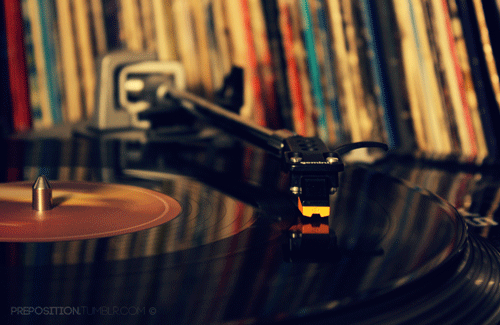You hear musicians talk all the time about groove. You might wonder what they mean by that. A lot of musicians couldn’t explain exactly, beyond “the thing that makes music sound good.” The etymology of the term comes from vinyl records. Musicians ride the groove the way a phonograph needle physically rides the groove in the vinyl.

But what is groove, exactly? It isn’t just a matter of everyone playing with accurate rhythm. When a classical musician executes a passage flawlessly, you don’t usually talk about their groove. Meanwhile, it’s possible for loosely executed music to have a groove to it. Most of my musician friends talk about groove as a feeling, a vibe, an ineffable emotional quality, and they’re right. But groove is something tangible, too, and even quantifiable.
Using digital audio production software, you can learn to understand the most mystical aspects of music in concrete terms. I’ve written previously about how electronic music quantifies the elusive concept of swing. Music software can similarly help you understand the even more elusive concept of groove. In music software, “groove” means something specific and technical: the degree to which a rhythm deviates from the straight metronomic grid.
Here’s a classic example of groove: the drum break that opens “Impeach The President” by the Honey Drippers, shown in Ableton Live’s loop editor.
Each big blob in the audio waveform is a drum hit. The drum hits’ onsets are marked with little yellow tags in the timeline. As you can see, while the drummer is keeping fairly steady time, no hit falls precisely on the nearest sixteenth note. Most of them are a little late, especially the snare hits. This was almost certainly intentional; drummers call it playing behind the beat. By contrast, the kick drum hit on beat 1.3 is a little early. This is an example of playing in front of the beat. There is a stretchy, rubbery “grid” implied by the exact placement of the drum hits. That grid is the groove of “Impeach the President.”
There’s a close analogy between groove and blue notes. Just like groove is a way of stretching and bending strict metronomic time, so are blue notes a way of stretching and bending the piano-key pitches. Primus Luta extends the analogy to sample-based hip-hop; he defines the “blue notes of sampling” as unexpected sonic artifacts that enhance rather than mar a track.
Groove is a practical term of art in electronic music production. Let’s say you wanted to play or program your own sounds on top of the “Impeach” break. If you were to line them up with the metronomic grid, they would sound off, because they wouldn’t match the timing of the drum pattern. Ableton Live, like many other music production tools, enables you to extract a groove from an audio recording, and use that as the basis for quantizing other events. Using extracted grooves is a terrific way to get your programmed MIDI synths and drum machines to have a funkier feel to them.
Any instrument can define a groove, so long as its note onsets are distinct. For that reason, drums, electric bass and guitar work better than flute or violin. Guitar and bass grooves are interesting because the note endings are just as important rhythmic signifiers as their onsets. A good guitarist or bassist can strum or pluck with good time; an excellent one mutes those notes or chords in time as well.
You might be wondering what the difference is between a groove and plain old inaccurate timekeeping. The big factor is intentionality. Good drummers (which the guy on “Impeach the President” most certainly is) can very deliberately place their hits ahead of or behind the beat. Playing behind the beat intentionally sounds really good. Dragging unintentionally sounds really bad. Ditto with playing in front of the beat versus rushing. It’s a subtle distinction, but it makes all the expressive difference in the world.
You might resist the idea of reducing the mystical concept of groove down to something so technical. You might object that groove is in the heart.
I agree! Groove is in the heart. For me, the fact that music is made of math doesn’t reduce its emotional impact at all. Quite the contrary. I find it totally amazing that the organization of sounds into patterns in time, along with slight deviations from those patterns, can bring a roomful of dancing people into a state of sweat-drenched ecstasy.
Related links:


Thanks a lot for the cool article ! It explains a lot ! But i still cant manage to fully understand the concept. So groove is a type of ryhtm that goes away from the metronomical grid ? Is that it ?
Exactly. The groove is close enough to the metronomic grid to be understood as being a steady beat, but varies from it enough to show the distinct musical personality of the performer.
Cool post, I referenced your definition of groove and quoted you in my latest post. You’re a better writer than I and I wanted to make sure you got the credit. Cheers!
Makes me wonder: What is Vibe? Can it be defined technically as well?
That’s an excellent question, and I don’t know the answer. But I’ll think about it.
Great article, everyone should know what is groove.
Very nice, thx man!
This is perhaps the best explanation of groove I’ve found.
Thank you! It’s been coalescing in my mind for quite a while.